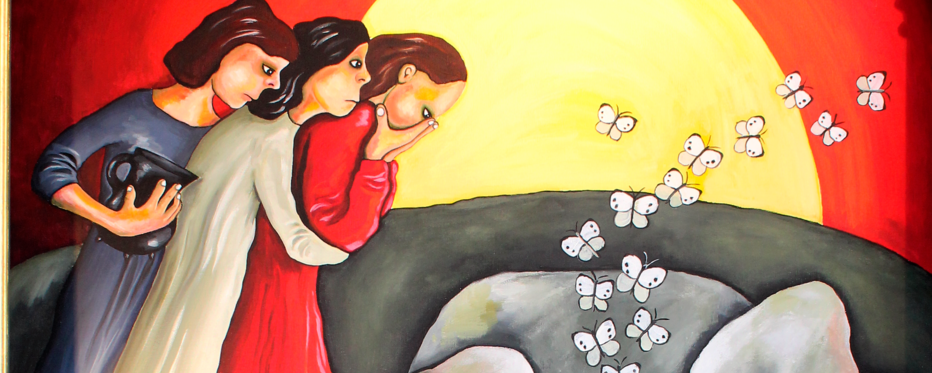What is liturgical colour?
Liturgical colours are the colours used for chasubles and other textiles, for example the altar cloth, within the context of the church service. The chasuble is the outermost vestment worn by the pastor for the celebration of the Eucharist; the use of chasubles can be traced back to the early church. The principal liturgical colours are white, purple, red and green.
White
The white colour symbolises purity, light, joy and feast. Therefore it is used on Christmas Day, Easter Sunday, Easter Monday, Annunciation Day, Ascension Day and Maundy Thursday. In addition to this white may be the liturgical colour on All Saints' Day. Instead of white gold can be used.
Red
Red is the colour of the Spirit, the colour of fire and of blood. That is why it is used at Pentecost and on St. Stephen's Day (Dec. 26) most widely known as the Second Day of Christmas. St. Stephen was the first Christian martyr. His story can be found in the Bible, in chapter 7 of the book called Acts.
Green
Hope and growth are symbolised by the colour green, which is used during the season of Epiphany (the first two to six Sundays after New Year) and the Trinity season (the part of the church calendar between Trinity Sunday and the first Sunday of Advent). In this period many Bible passages read in church on Sundays tell us about Jesus' childhood and adolescence and about growing in faith.
Purple
Purple signifies repentance and is used during Advent (2nd-4th Sunday of Advent) and Lent, including Good Friday. However, in many churches no liturgical colours are used on Good Friday and the pastor only wears the black robe with no chasuble.



